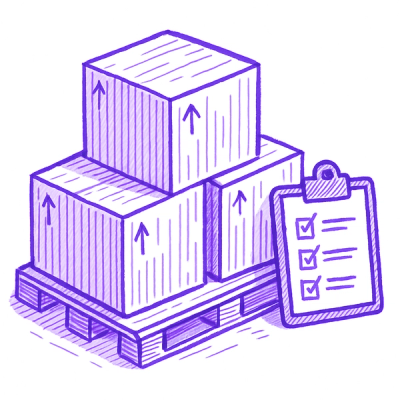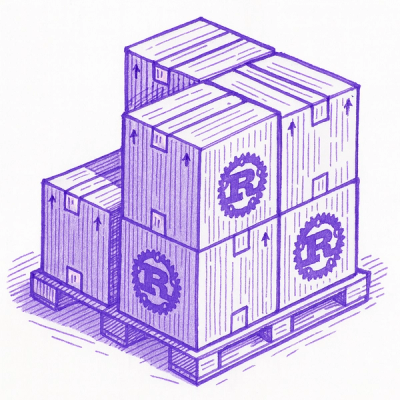
Security News
Open Source Maintainers Feeling the Weight of the EU’s Cyber Resilience Act
The EU Cyber Resilience Act is prompting compliance requests that open source maintainers may not be obligated or equipped to handle.
wlbot is a Node.js based CLI that can be used to make some of the most common API calls that are possible with the WeatherLink v2 API.
wlbot via npmwlbot Manually via the Github Repository
wlbot via npmNo matter how you install wlbot, it requires that you have a WeatherLink v2 API Key and Secret.
The WeatherLink Developer Portal outlines how to get your API key at https://weatherlink.github.io/v2-api/tutorial:
To retrieve your WeatherLink v2 API Key and API Secret you can go to WeatherLink.com and visit the Account page at https://www.weatherlink.com/account.
Once on the Account page you can click the Generate v2 Key button to create a new WeatherLink v2 API Key and API Secret.
Note: Your API Secret should never be shared with anyone.
No matter how you install wlbot, it requires several permanent environmental variables to be set. Before running the CLI locally for this first time, you must set the necessary environment variables. The table below specifies the name and value of the environment variables that are required.
| Environment Variable Name | Environment Variable Value |
|---|---|
WEATHER_LINK_API_KEY | <your_api_key> |
WEATHER_LINK_API_SECRET | <your_api_secret> |
WEATHER_LINK_BASE_API_URL | https://api.weatherlink.com/v2/ |
Note: <your_api_key> and <your_api_secret> should be replaced with the API Key and API Secret that you where given when creating your WeatherLink API as described above.
This article describes how you can set permanent environment variables on macos or Linux.
This article describes how you can set permanent environment variables on Windows Operating Systems.
wlbot via npmwlbot is listed on the npm repository at https://npmjs.com/package/wlbot.
You can globally install the wlbot CLI by:
npm install -g wlbot.This process could take a minute or two, depending on your internet connection.
wlbot Manually via the Github RepositoryIt is easy to get a copy of the wlbot CLI running locally.
In order to run wlbot locally, the following will need to be installed on your machine:
wlbotwlbot to run on top of Node.jsNavigate to the location on your development machine where you want to place this project's directory and clone the repository by running the following command:
git clone https://github.com/mike-weiner/wlbot.git
wlbot requires several packages to run on top of Node.js. Those packages can be installed by the following command at the root of the directory for this project running:
npm install
Once you have all of the environment variables required by the CLI set, we need to globally install the CLI in npm. This will allow you to call wlbot on your command line without being in this project's directory.
To globally install the wlbot package, navigate to the project's root directory on your command line. This should be the directory where this README is found. Then run the following command:
npm i -g .
Note: It is not required that you install wlbot globally in npm. However, if it is not installed globally you will only be able to call the wlbot command when you are in the directory where you have this project located.
Congrats! You should now be able to open up a new terminal window and run wlbot. You can run wlbot -h to get help understanding how to use this CLI.
wlbot contains a helpful command to ensure that your environmental variables are set correctly. Run wlbot config to print out the values of the environmental variables that are required by wlbot.
You can run wlbot config -l to list the full values of the environmental variables. Note: Be careful running this command as your WeatherLink API Secret's value will be shown. You don't want to share this with anyone.
There are several commands that you will probably call more frequently than others. Some of the more common commands include:
wlbot metadata mine: This command will return an array of station-id numbers for the weather station's that your WeatherLink account has permission to view data for.wlbot weather current <station-id>: This command will return the current weather record for the station whose station id matches <station-id>.wlbot via npmIf you installed wlbot via npm, you can quickly get an updated version via the command line.
To see what version of wlbot you currently have installed:
wlbot -V.To upgrade your installed version of wlbot:
npm update -g wlbot.Downloading the upgrade may take a minute or two based on your internet connection.
All contributions are welcome!
First, search open issues to see if a ticket has already been created for the issue or feature request that you have. If a ticket does not already exist, open an issue to discuss what contributions you would like to make.
All contributions should be developed in a feature/ branch off of the development branch as a PR will be required before any changes are merged back into the development branch.
If you are introducing new functionality, please add unit tests (UTs) to ensure the functionality of your contribution and its backwards compatibility. All UTs should be able to run locally. You will need to install the devDependencies to run the UTs.
Distributed under the MIT License. See LICENSE.txt for more information.
Below are several references that were used to help find inspiration for this project, get a starting point for the CLI, and serve as a resource for the WeatherLink API.
FAQs
A CLI for the WeatherLink Live API.
The npm package wlbot receives a total of 21 weekly downloads. As such, wlbot popularity was classified as not popular.
We found that wlbot demonstrated a healthy version release cadence and project activity because the last version was released less than a year ago. It has 1 open source maintainer collaborating on the project.
Did you know?

Socket for GitHub automatically highlights issues in each pull request and monitors the health of all your open source dependencies. Discover the contents of your packages and block harmful activity before you install or update your dependencies.

Security News
The EU Cyber Resilience Act is prompting compliance requests that open source maintainers may not be obligated or equipped to handle.

Security News
Crates.io adds Trusted Publishing support, enabling secure GitHub Actions-based crate releases without long-lived API tokens.

Research
/Security News
Undocumented protestware found in 28 npm packages disrupts UI for Russian-language users visiting Russian and Belarusian domains.